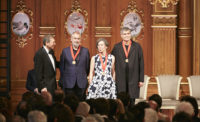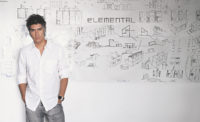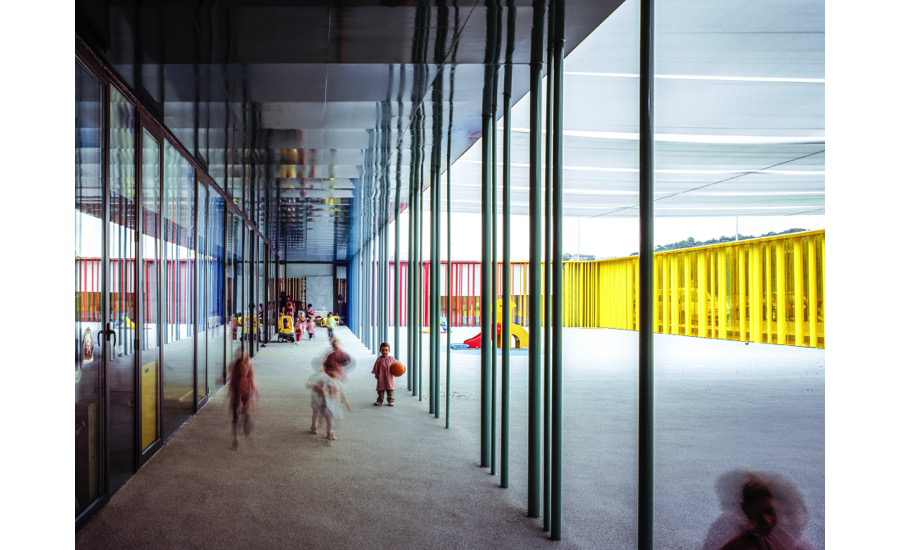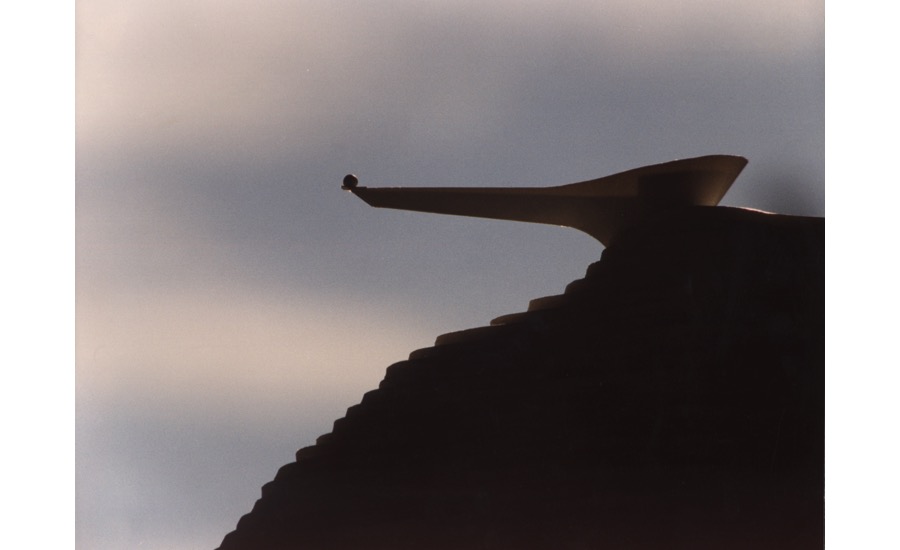2017 Pritzker Prize Goes to Rafael Aranda, Carme Pigem, & Ramon Vilalta of RCR Arquitectes

RCR Arquitectes
2017 Pritzker Prize laureates Rafael Aranda, Carme Pigem, and Ramon Vilalta.
Photo © Javier Lorenzo Domínguez, courtesy of the Pritzker Architecture Prize

Soulages Museum (2014), Rodez, France
In collaboration with G. Trégouët
The Corten building, realized in collaboration with local firm Passelac et Roques Architects, houses a collection of works by abstract artist Pierre Soulages.
Photo © Hisao Suzuki, courtesy of the Pritzker Architecture Prize

Soulages Museum (2014), Rodez, France
In collaboration with G. Trégouët
View of the interior of the museum showing the relation between the space and the paintings.
Photo © Hisao Suzuki, courtesy of the Pritzker Architecture Prize

La Cuisine Art Center (2014), Nègrepelisse, France
A 13th-century castle in a village in the Midi-Pyrénées region of southwest France was designated for a new cultural program focusing on arts and cuisine. The architects created new facilities around and within the old structure, including a kitchen, exhibition and educational spaces, and administrative areas.
Photo © Hisao Suzuki, courtesy of the Pritzker Architecture Prize

La Cuisine Art Center (2014), Nègrepelisse, France
The kitchen leads to an exhibition space and small auditorium. The window provides continuous views to the landscape.
Photo © Hisao Suzuki, courtesy of the Pritzker Architecture Prize

Row House (2012), Olot, Girona, Spain
The architects inserted a new house between two existing walls on a lot where an old house—the facade of which was preserved—once stood. Conceived as a single space with several floating platforms, the house is characterized by stone and steel.
Photo © Hisao Suzuki, courtesy of the Pritzker Architecture Prize

Row House (2012), Olot, Girona, Spain
View from the living room into the dining area and kitchen below, and a bedroom above (left). View showing how different levels create the different spaces (right).
Photo © Hisao Suzuki, courtesy of the Pritzker Architecture Prize

La Lira Theater Public Open Space (2011), Ripoll, Girona, Spain
In collaboration with J. Puigcorbé
Using weathering steel to evoke the area’s metallurgical past, the architects created a covered space that looks toward the opposite bank of the Ter River.
Photo © Hisao Suzuki, courtesy of the Pritzker Architecture Prize

La Lira Theater Public Open Space (2011), Ripoll, Girona, Spain
In collaboration with J. Puigcorbé
A new 40-meter weathering steel footbridge crossing the Ter River leads to the structure.
Photo © Hisao Suzuki, courtesy of the Pritzker Architecture Prize

Les Cols Restaurant Marquee (2011), Olot, Girona, Spain
The architects created a semi-open event and banquet space covered by a semitransparent roof of tubes.
Photo © Hisao Suzuki, courtesy of the Pritzker Architecture Prize

Les Cols Restaurant Marquee (2011), Olot, Girona, Spain
The architects created a semi-open event and banquet space covered by a semitransparent roof of tubes.
Photo © Hisao Suzuki, courtesy of the Pritzker Architecture Prize

El Petit Comte Kindergarten (2010), Besalú, Girona, Spain
In collaboration with J. Puigcorbé
Around the perimeter of the one-story school, vertical tubes (some of them structural) create a rainbow of colors that some have likened to giant colored pencils.
Photo © Hisao Suzuki, courtesy of the Pritzker Architecture Prize

El Petit Comte Kindergarten (2010), Besalú, Girona, Spain
In collaboration with J. Puigcorbé
Classrooms, sleeping areas, and a multipurpose room flank the central courtyard.
Photo © Hisao Suzuki, courtesy of the Pritzker Architecture Prize

Barberí Laboratory (2008), Olot, Girona, Spain
The architects share a large desk in their library workspace.
Photo © Hisao Suzuki, courtesy of the Pritzker Architecture Prize

Barberí Laboratory (2008), Olot, Girona, Spain
A covered area in the garden blurs the line between interior and exterior spaces. A moveable steel table rises from the floor as needed.
Photo © Hisao Suzuki, courtesy of the Pritzker Architecture Prize

Sant Antoni – Joan Oliver Library, Senior Citizens Center and Cándida Pérez Gardens (2007), Barcelona, Spain
View toward the senior citizens center. Light filters through the windows from both sides, connecting the patio with the city beyond.
Photo © Hisao Suzuki, courtesy of the Pritzker Architecture Prize

Sant Antoni – Joan Oliver Library, Senior Citizens Center and Cándida Pérez Gardens (2007), Barcelona, Spain
View towards the five-story library and the row of tamarind trees that extend from the street into the courtyard.
Photo © Eugeni Pons, courtesy of the Pritzker Architecture Prize

Bell–Lloc Winery (2007), Palamós, Girona, Spain
View of the interior of the winery toward the tasting room. The slats allow air, light and rain to enter and create ever changing shadows.
Photo © Hisao Suzuki, courtesy of the Pritzker Architecture Prize

Bell–Lloc Winery (2007), Palamós, Girona, Spain
From the forest, the valley extends towards the sea. Vineyards cover the wine cellar, and the folded roof protects the laboratory and the walkways.
Photo © Hisao Suzuki, courtesy of the Pritzker Architecture Prize

Tossols-Basil Athletics Track (2000), Olot, Girona, Spain
The architects sited a track in a forest clearing, located at the edge of a city and a park along a river, and placed seating on small terraces, often using the natural topography.
Photo © Ramon Prat, courtesy of the Pritzker Architecture Prize

Tossols-Basil Athletics Track (2000), Olot, Girona, Spain
Photo © Ramon Prat, courtesy of the Pritzker Architecture Prize

Canary Islands Lighthouse Model (1988)
Though unbuilt, this design gained the architects international recognition. Their winning submission to a national competition for a lighthouse in the Canary Islands eschewed the archetypal tower and proposed a cantilevered structure.
Photo courtesy RCR Arquitectes






















For Rafael Aranda, Carme Pigem, and Ramon Vilalta, design is a deeply communal practice. Not only do the three Spanish architects share a firm, RCR Arquitectes, they also share a single desk. “One draws a line, and another adds on,” says Pigem. It’s through this collective, iterative process that their masterful works come into being: a museum wrought in weathered steel, a translucent banquet hall punctuated by tree trunks, a kindergarten that evokes a box of colored pencils.
Now Aranda, Pigem, and Vilalta also share the 2017 Pritzker Architecture Prize. It is the first time the award has been bestowed upon three laureates in 38 years; only twice has it been given to two partners, not a solo architect. The three partners of RCR will share $100,000 and the Prize’s signature bronze medallion, based on the designs of Louis Sullivan, at a ceremony at the Akasaka Palace in Tokyo on May 20.
“The collaboration of these three architects produces uncompromising architecture of a poetic level, representing timeless work that reflects great respect for the past, while projecting clarity that is of the present and the future,” Glenn Murcutt, the chairman of the Prize’s nine-member jury, said in the announcement.
Over the span of their nearly three-decade career, Aranda, Pigem, and Vilalta have worked primarily in their native Catalonia, designing dozens of projects there, ranging from a two-Michelin Star restaurant, to a running track in the middle of a forest clearing. The work may be unfamiliar to architects practicing outside of Europe, but through their sensitive handling of context and materials, the architects of RCR have developed the uncanny ability to make the singular feel universal. “For us architecture is not a device you can use, but something that pushes your emotions,” Pigem tells RECORD.
Aranda, Pigem, and Vilalta hail from Olot, Spain a town of 34,000 cradled by a cluster of dormant volcanoes. The three architects became friends while studying at the Escola Tècnica Superior d’Arquitectura del Vallès (ETSAV), outside Barcelona. (“They heard a girl from Olot was studying architecture and they both came to meet me,” says Pigem with a laugh.)

Image courtesy RCR Arquitectes
At the time, Spain was still recovering from the economic and political turbulence that followed the death of Francisco Franco in 1975. At ETSAV, it was a prime time to employ radical design ideas. “A teacher there told us, ‘If you want to be a good architect, you have to refuse the first project that will bring you a lot of money,’” Pigem recalls. Upon graduating, the three returned to Olot, eschewing the idea of establishing a big city practice. Vilalta and Pigem married, and together with Aranda in 1988, the trio established RCR, named for their first initials.
The architects took their professor’s advice to heart and boldly turned down their first would-be project. Instead, they devoted themselves to a national competition for a lighthouse in the Canary Islands. They questioned the idea of an archetypal tower and proposed a cantilevered structure that would perch on the edge of a sea cliff like an oil lamp. The proposal took first place and, though unbuilt, gained the firm international exposure.
This rigorous interrogation of a project’s essence continues to inform RCR’s work. Take their Les Cols restaurant in Olot (2002), which juxtaposed a 17th-century agrarian shell with gleaming Midas-touched interiors. Or the raw, steel gallery spaces for the Soulages Museum in Rodez, France (2014), inspired by the stormy engravings created by the museum’s namesake. When designing El Petit Comte Kindergarten in Besalú, Spain (2010), the architects observed that children often run their hands along walls as they walk, so they designed a screen made of rainbow-colored tubes that rotate and allow the children to engage with the building.
The Pritzker prize has recently gone to architects with an explicit social agenda, notably last year’s laureate Alejandro Aravena and the 2014 honoree, Shigeru Ban. The architects of RCR view their contribution to society as something more abstract: “For us, we think the social aspect of our work is a sense of quality for everybody,” says Pigem. In 2013, the firm launched the RCR BUNKA Foundation, which hosts architecture workshops and public lectures in Olot. “Sometimes architecture is perceived only as landmarks,” Pigem says. “We wanted to create this foundation to help society understand the value of architecture.”
The firm sees the Pritzker prize as the ideal platform to support the goals of their firm—currently a group of twelve—as well as their foundation. “We feel really honored and happy, but we also feel as though we have a responsibility,” says Pigem of the win. “It’s a dream coming true.” She pauses: “No, being true.”
























